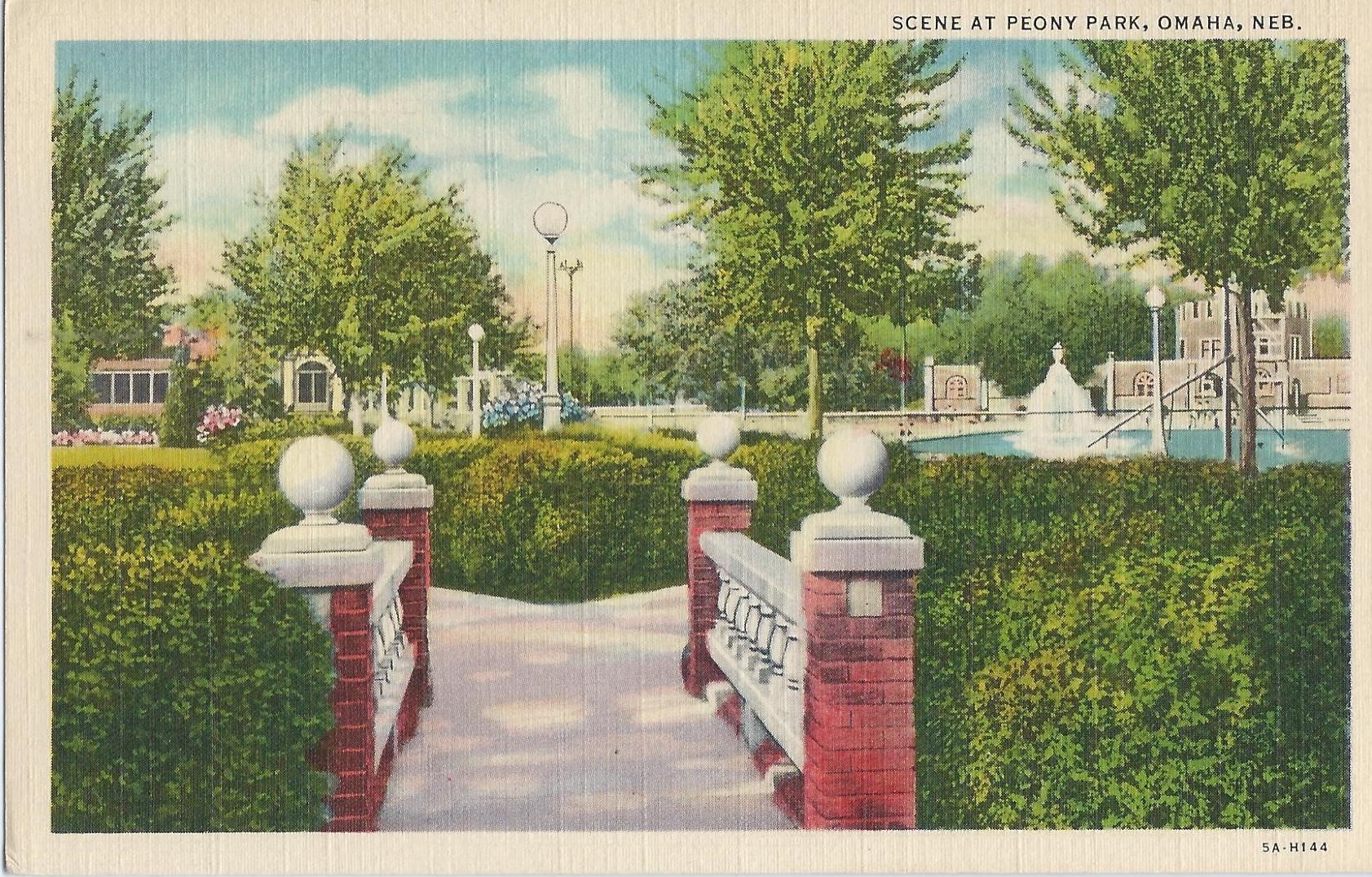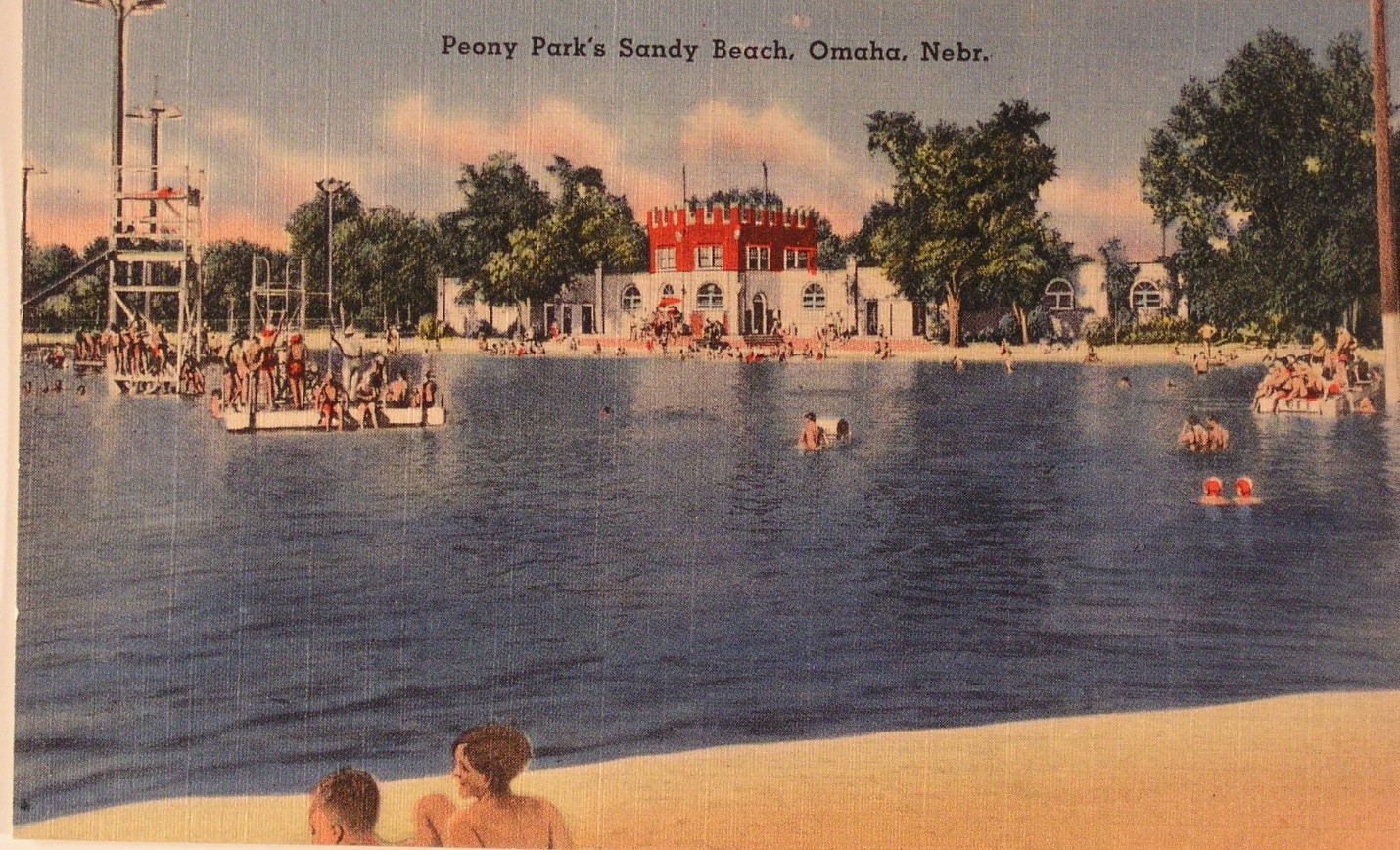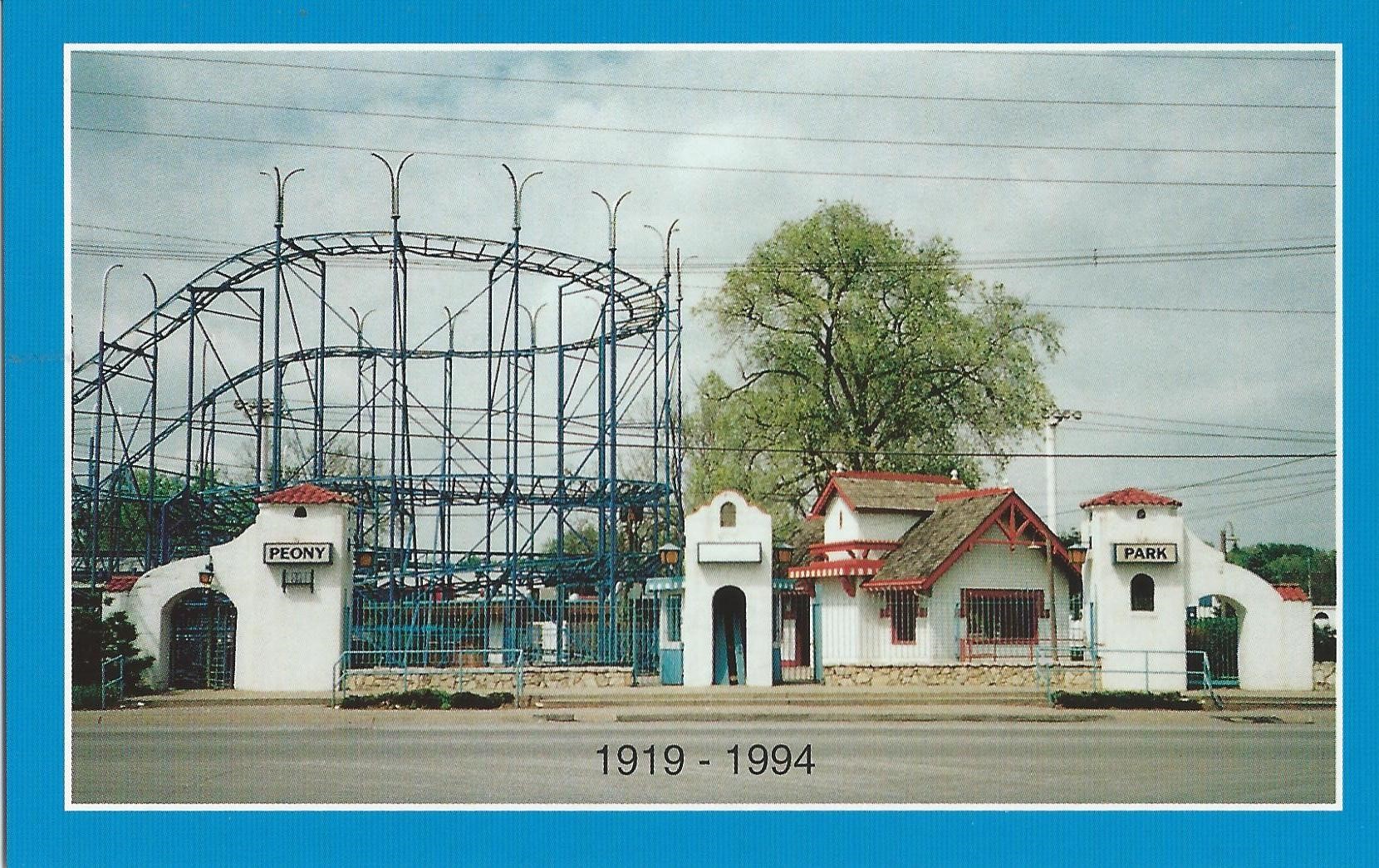Nostalgia is a powerful feeling. The mention of a place or a person can make you feel like you’re there, or with that person, (or there with that person) all over again. Sometimes you don’t even have to hear a name. The smell of lilacs can put you in your grandparents’ backyard or the sound of a horse neighing will take you to the summer camp you went to in 8th grade.
For many Omahans, the name Peony Park provokes the strongest sense of that sentimental feeling. Their favorite song from a band they saw at the park might start playing in their head. Or perhaps it will be the echoing voice of Sweet 98’s “Hot Scott,” aka Scott O’Hanlon, the man famous for DJing the infamous Sprite Nights held at the park on Thursdays during the summer.

Gas Station
While today’s parents and older brothers and sisters likely remember Peony Park for its incredible pool and those summer nights filled with music and dancing, the park’s history goes back much further.
Its first incarnation back in 1919 was simply a gas station and restaurant across the street from Carl Rosenfield’s 25-acre peony farm on the Lincoln Highway in what could have been considered far West Omaha. Manhattan Gas and the restaurant called Peony Inn were started by Joe Malec, Sr. and his brothers Jerry and Godfrey. It was a savvy business move, as the peony farm saw a lot of tourism at the time. But they had bigger plans, expanding the property into a more garden-like park area, and eventually opening a dance pavilion in place of the Peony Inn, which would later be known as the Royal Grove. Despite a devastating fire that burned the hall to the ground in February 1925, it would eventually become one of the biggest draws for musicians and music fans alike.

Music Central
The Royal Grove saw some of music’s biggest names play to its audiences, especially during the big-band eras of the 1930s and 1940s. Duke Ellington, Glen Miller, Tommy Dorsey all played there, as did Lawrence Welk, a regular performer at the venue who had not yet reached the height of his popularity. Omaha’s own Preston Love also performed there and later, so too did The Beach Boys and Chubby Checker.
While those early days are considered a sort of musical golden age at Peony Park, younger generations who came of age in the ’80s and (early) ’90s likely have fond memories of bands such as Metallica, Pearl Jam, Red Hot Chili Peppers and The Pixies. Live music played a huge role in cementing the park’s place in history. But of course, it was also an amusement park, which means rides. And they had plenty of those.
Wild Rides and Speedy Slides
Peony Park had rides for big and small kids alike, including its popular Galaxy Roller Coaster, Ferris wheel, and the Scrambler. They even had a special miniature rollercoaster, perfect for smaller children. There was also a small train and a miniature golf course, popular with young and old, called “Around the World in 18 Holes.” But one would be hard-pressed to find someone who visited Peony Park who wouldn’t remember the Sky-Rail, which took its visitors for a loop around the park’s infamous pool.
The pool was a huge draw for Peony Park. Opened in 1926, the pool was developed from a natural spring-fed lake. But it was so much more than the average pool. An Omaha World-Herald article printed in 1947 described it thus: “The pool and surrounding beach take up about 4 acres. There are five million gallons of filtered, chlorinated water in the lake. It is supplied from artesian wells. The pool is seven hundred feet long. Its width varies from 150 feet to four hundred feet. The depth ranges from one foot for youngsters, to 10 feet for expert swimmers and divers.”

It’s easy to understand why the park was a wildly popular place for children and adults alike throughout the decades. Unfortunately, its history also has a fair share of scars.
It’s easy to understand why the park was a wildly popular place for children and adults alike throughout the decades. Unfortunately, its history also has a fair share of scars.
In 1979, 13-year-old Neal Tetzlaff died after a cage on the SkyDiver ride opened when a cotter pin fell out. Byron James Conant, 31, died after falling from the Hurricane, reportedly after he was seen outside the safety bar. There was also an especially tragic drowning at the large, beach-like pool in which a decision had to be made between saving a father or his son, according to former employee Carl Jennings. Senator Ed Zorinsky died of heart attack right after performing in an Omaha Press Club show.
These incidents were awful, but not necessarily unheard of for an amusement park. However, one can’t talk about the history of Peony Park without addressing its own ugly, self-imposed scar—racial segregation.
A World Apart
Throughout the 1950s and into the early 1960s, Black people were allowed in the park, yet were not allowed to swim in its pool. When two Black airmen from Offutt Air Force Base attempted to enter the pool in June 1963, they were denied entrance, despite Nebraska laws prohibiting discrimination. Air Force Captain Michael King filed a complaint, pursuing legal action.
A month later, members of the youth council of the NAACP (National Association for the Advancement of Colored People) sought entrance to the pool and were promptly denied. Omaha entrepreneur Herb Rhodes was a part of that group. “We went out there, probably on a Sunday afternoon or Saturday afternoon…to go swimming, with the expectation that we would be denied entrance.”
This act was followed by several days of peaceful protests. The park even converted to a private club for a time to avoid allowing Black people entry. Facing several lawsuits, the park’s management eventually gave in and opened the pool to all. Rhodes said he didn’t remember there being much of an issue after that, though there are several accounts, including one from former Omaha Mayor Mike Boyle, attesting that some white people got out of the pool after the Black youths got in.
A Slow Decline
Despite these incidents, Peony Park lasted another three decades. But as attendance slowed and expenses added up, the owners filed a Chapter 11 bankruptcy action in 1991. The park continued to lose money in 1992 and 1993. In December 1993, it was announced that the park was for sale and would close March 31, 1994, unless a buyer decided to keep it open.
On March 22nd of that year, Peony Park was sold to a private development group. Their future plans included removing the pool, ballroom and rides—essentially razing the park to the ground, which they did. Now, all that remains of the park is the building that once housed the Plaza Theater and is now Big Red Keno. There hasn’t been anything quite like it since it closed nearly 30 years ago, but for so many people who frequented this Midwest haven, it lives on in their hearts and in their memories.

Sources:
https://www.concertarchives.org/venues/peony-park-ballroom#years-section
https://theclio.com/entry/58177
https://apnews.com/article/209ada305d2a73108e1138d62b149979
(1963, July 26). Omaha Star, p. 1. Available from NewsBank: America’s News – Historical and Current.
(1963, July 5). Omaha Star, p. 1. Available from NewsBank: America’s News – Historical and Current.
https://www.ketv.com/article/throwback-thursday-the-beginning-of-the-end-of-peony-park/16704434
https://www.onlyinyourstate.com/nebraska/rare-footage-amusement-park-ne/